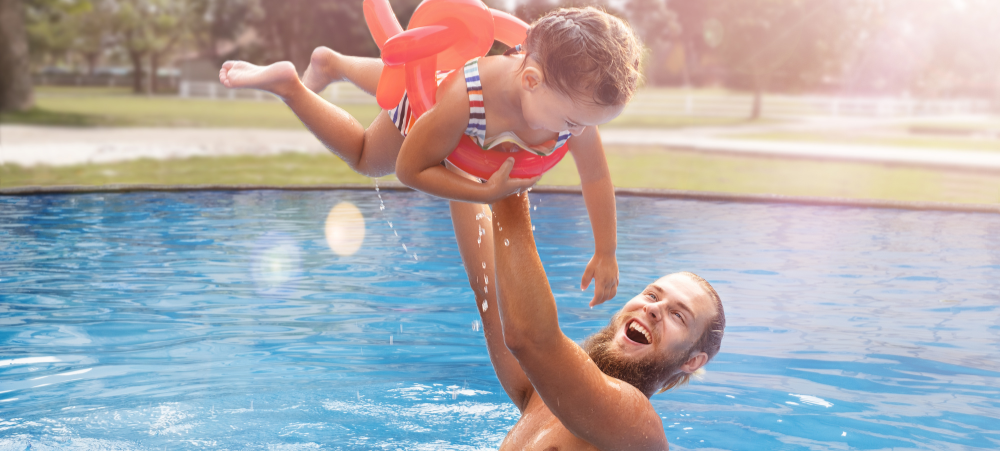Whether you have a pool or have small children in your family or social circle, everyone needs to learn about pool safety. Being able to identify a drowning in progress and acting fast can make a real difference to the child making a full recovery after a drowning incident.

Most people imagine that picture A is an accurate depiction of a drowning in progress. In reality, B and C are more accurate – mouth at water level, head bobbing, body upright, little to no splashing and sometimes the appearance of doing doggie paddle.
Familiarise yourself with these drowning behaviours:
- Head low in the water, mouth at water level
- Head tilted back with mouth open
- Trying to roll over onto the back to float
- Hair falling over the forehead or eyes
- Body is vertical/ upright
- Eyes glassy & empty, unable to focus
- Eyes open, with fear evident on the face
- Hyperventilating or gasping
- Trying to swim in one direction but without progress
Common Drowning Myths
Myth: Drowning children will shout for help
Drowning children are physiologically unable to call out. The respiratory system is designed for breathing – speech is the secondary function. Drowning children’s mouths alternately sink below and reappear above the surface but while their mouth is above the surface, they need to exhale and inhale before they sink again. There is not enough time to cry out.
Myth: Drowning children are unsupervised children
50% of all child drownings will occur 25 metres or less from an adult who was distracted for only a few seconds.
Myth: Drowning children wave their arms to attract attention or will thrash in the water
Drowning children cannot wave for help. Physiologically, a person who is drowning cannot perform voluntary movements such as waving or moving towards a rescuer. Envisage the surface of the water as a platform. Someone who is drowning often presses down on the surface and tries to use it as leverage to get their mouth above the water’s surface to breathe. So what the onlooker sees are arm movements that can appear to be playful swimming. Children will not kick wildly either. They remain upright in the water with no evidence of a supporting kick. They are quiet, focused only on breathing and show no signs of violent struggle. The child’s struggle is quick — 20 seconds, whereas an adult struggles for 60 seconds.
Myth: My child has had swimming lessons so he / she won’t drown
No child is ever drown-proof, no matter how good their swimming skills. A few swimming lessons are no guarantee when it comes to drowning prevention.
Myth: Water wings and flotation aids will prevent drowning
Water wings give a dangerous and false sense of security, often making children think they are stronger swimmers than they actually are. Flotation aids can also suddenly deflate.
To prevent a tragedy, be vigilant about pool safety and cover your pool with the leading safety cover from PowerPlastics Pool Covers – The PowerPlastics Solid Safety Cover which also complies with local safety regulations. This cover also saves water, power and chemical input, giving you safety as well as savings, and it brings a beautiful finish to the outdoor living area. Learn more and shop online at www.powerplastics.co.za
- Child drowning prevention – using the layers of safety method to prevent accidents - November 4, 2025
- Interactive learning to promote water safety among children - October 15, 2025
- Safety and sustainability from a single pool cover – the PowerPlastics Solid Safety ticks all the boxes - September 20, 2024





